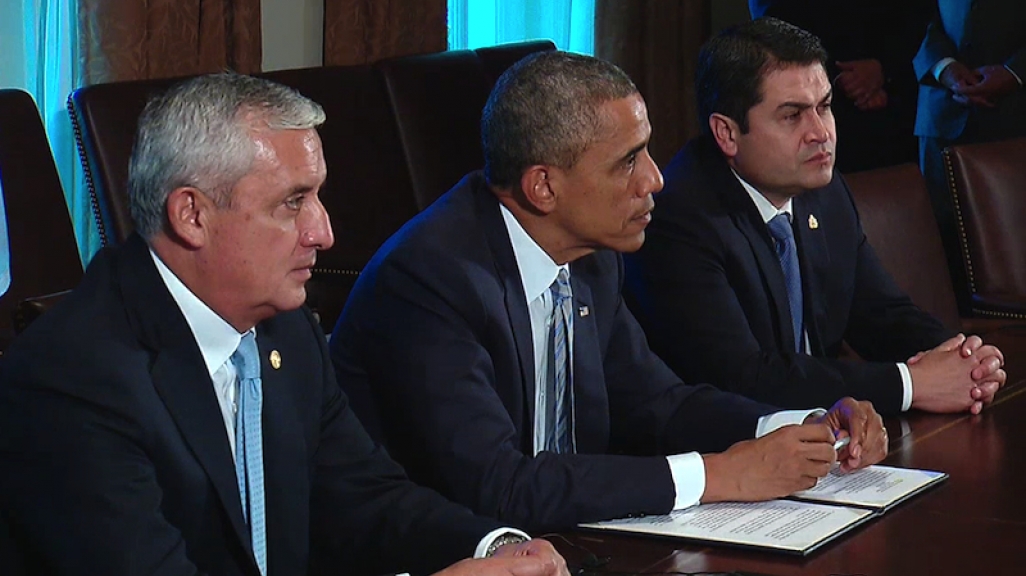Central America: Back on Washington's Radar
Central America: Back on Washington's Radar
The United States has an important stake in helping Central American countries address economic and security challenges, writes COA's Eric Farnsworth for The Miami Herald.
Three Central American presidents will be in Washington next Friday for the second time since June to seek assistance from the international community to address the political and economic challenges overwhelming the region.
Though difficulties have been building for years, Central America burst back onto Washington’s radar just one year ago, when a surge of unaccompanied minors began to cross the Southwest border of the United States. Washington took steps to stanch and reverse the flow but then missed the opportunity to begin to address the root causes of the crisis when supplemental development assistance failed in Congress.
But the issues have not gone away.
Central America’s geography is its destiny: The region exists between the world’s largest consumer of illegal drugs, the United States, and the world’s largest producer, South America. Natural disasters have caused immense human and physical destruction and wiped out significant economic production. Manmade disasters, including the Honduran political crisis in 2009, led to a vacuum in already weak governance that was exploited by drug traffickers and criminal gangs.
At the same time, the United States has deported hardened criminals back to the region without full coordination with receiving nation officials, while weapons exported from the United States often fall into criminal hands.
It’s a potent mix that regional governments have largely proven incapable of responding to effectively. In part, that is because in the wake of the brutal wars of the 1980s and early 1990s they have been unable to establish effective police forces and institutions that administer justice. It is also because conditions do not yet exist for the creation of sufficient, sustainable jobs that offer real alternatives and prospects for a better life.
Regional job creation is not a panacea, but it would provide options for young, single and untrained men who otherwise wind up with criminal gangs. Freer trade with the United States through the CAFTA-DR agreement was a beginning, but the agreement only establishes permanent market access to the United States for most products and rules of the game for private sector engagement; it does not guarantee results.
Without an attractive business climate that includes enhanced personal security, an educated workforce, improved infrastructure and regulatory transparency and the rule of law, investors will look elsewhere. And that means foregone access to global supply chains, tax receipts and job creation.
When the presidents of El Salvador, Guatemala and Honduras visit Washington, their primary message will be that Central America is open for business, looking for inspiration to the Plan Colombia approach that attracted significant support and ultimately became a bipartisan foreign-policy success.
But circumstances are different this time, in part because Colombia showed the capacity and the willingness to raise significant new resources domestically from those best positioned to contribute as well as establishing the conditions within Colombia that have drawn investment.
Additionally, Colombia has stayed the course under three consecutive presidents and their respective administrations. That’s a record of policy leadership and stability that has so far eluded the northern tier countries of Central America.
Similar to Colombia, the problems facing Central America will take years and significant resources to address.
The United States has an immense stake in regional success given our own history and engagement there. The United States can do more to help improve the business climate, and Washington must also be mindful of the potential unintended consequences on Central America of trade expansion efforts elsewhere.
It must take steps to hold the region harmless from the impact on regional competitiveness from trade diversion.
Washington can also encourage creation of a broader regional economy, while also dealing with security issues from a regional rather than national perspective.
Plan Colombia offers hope. But it also offers the lesson that U.S. assistance for Central America will not be fully effective until and unless the primary initiative for lasting change emanates from within the region itself.
Eric Farnsworth is vice president of the Council of the Americas and Americas Society.









